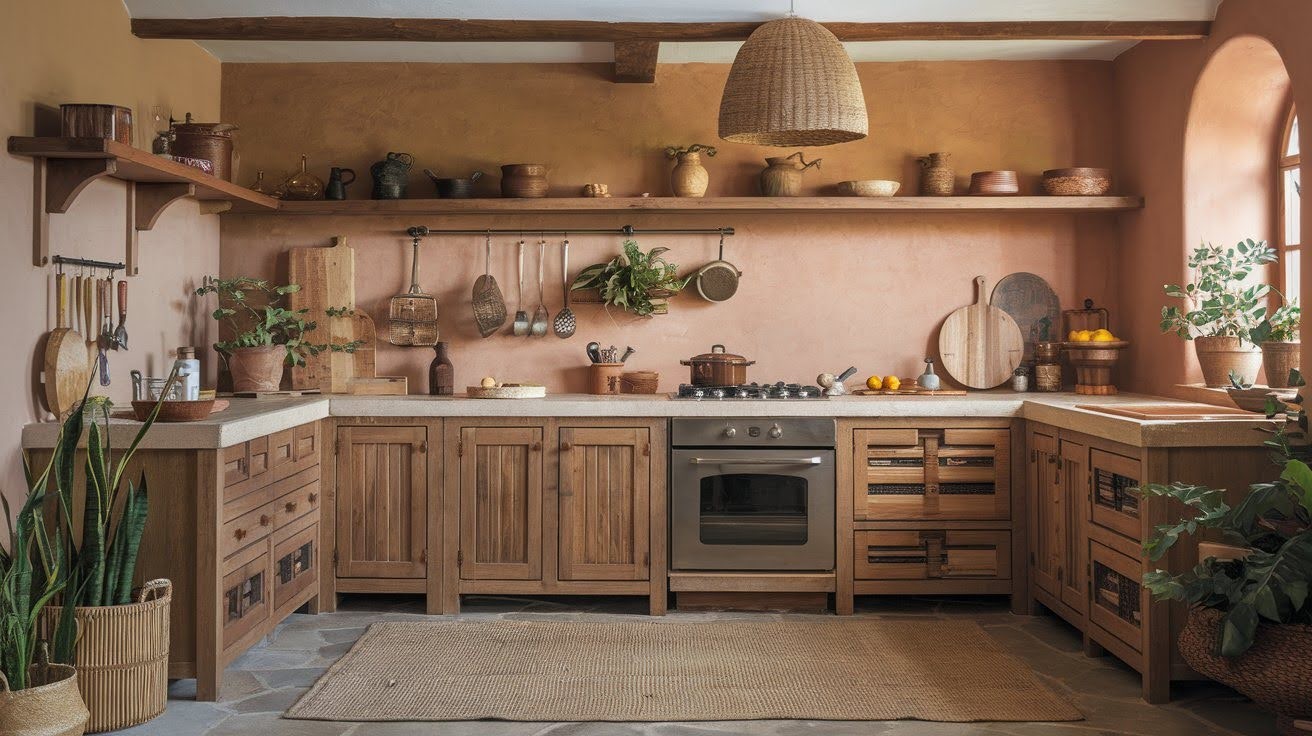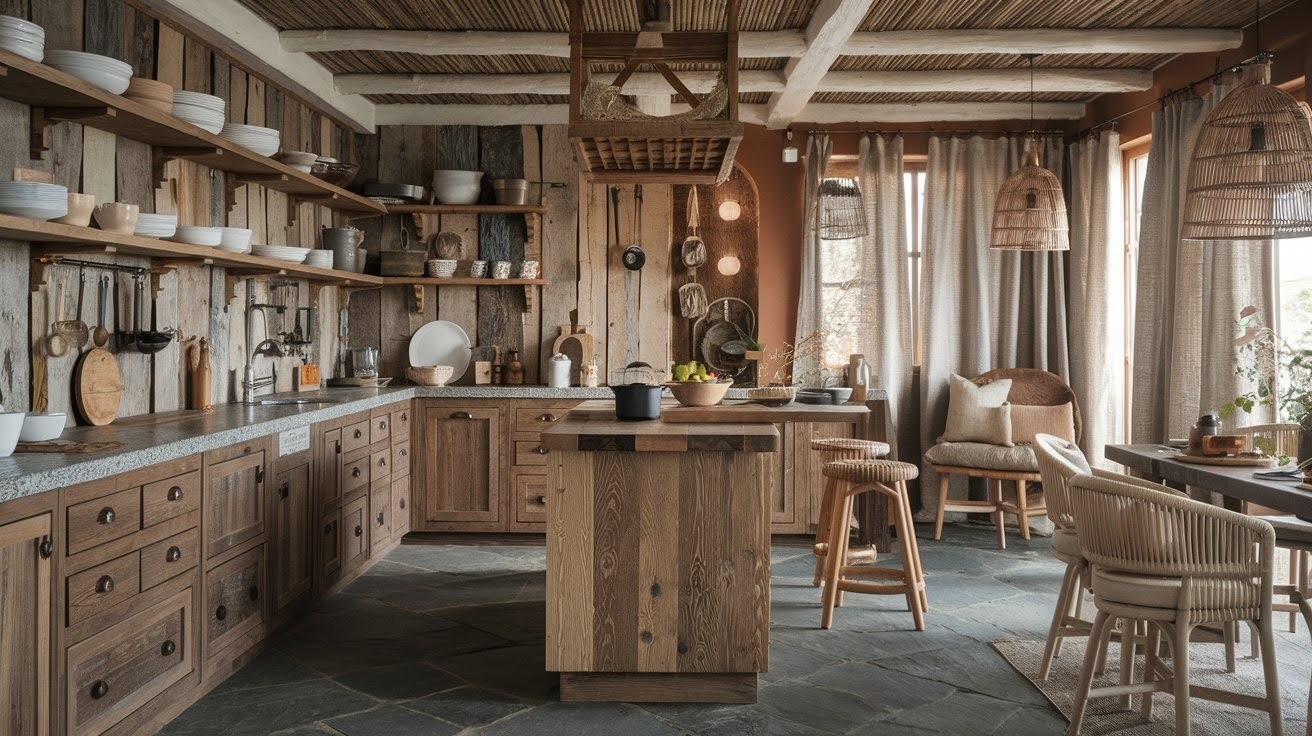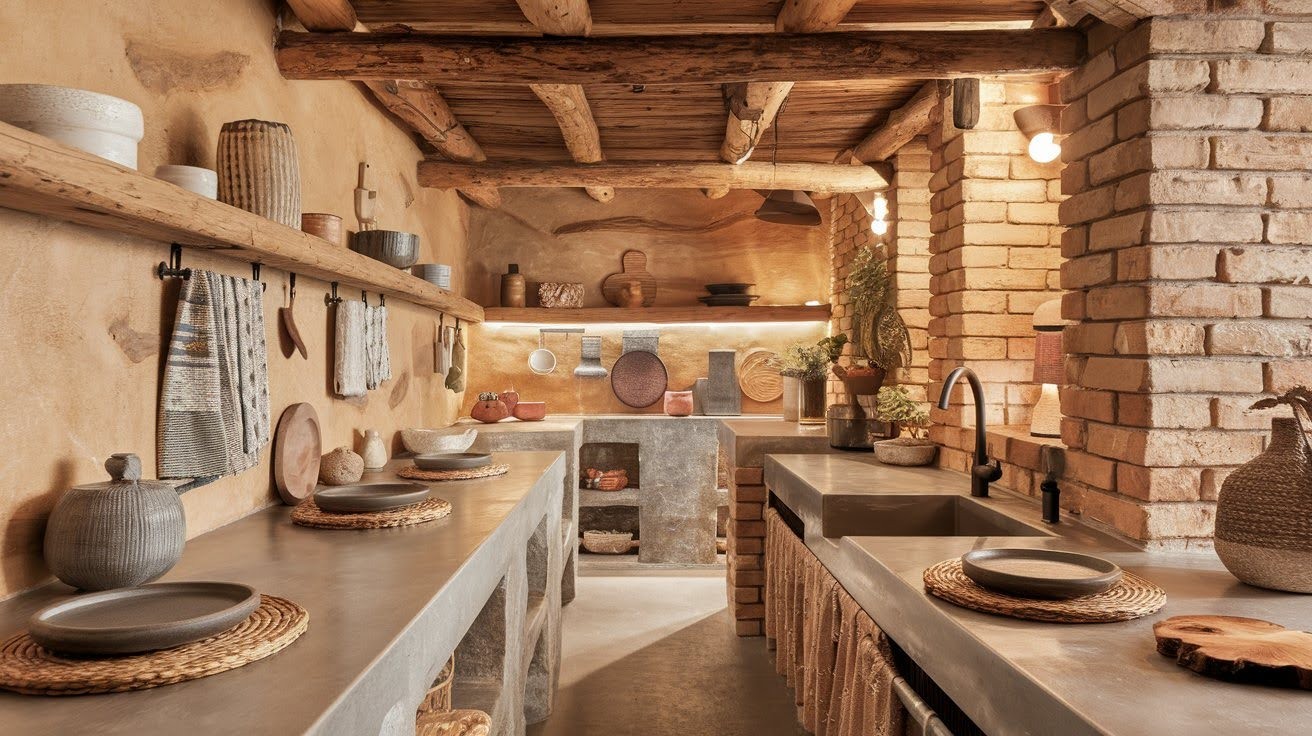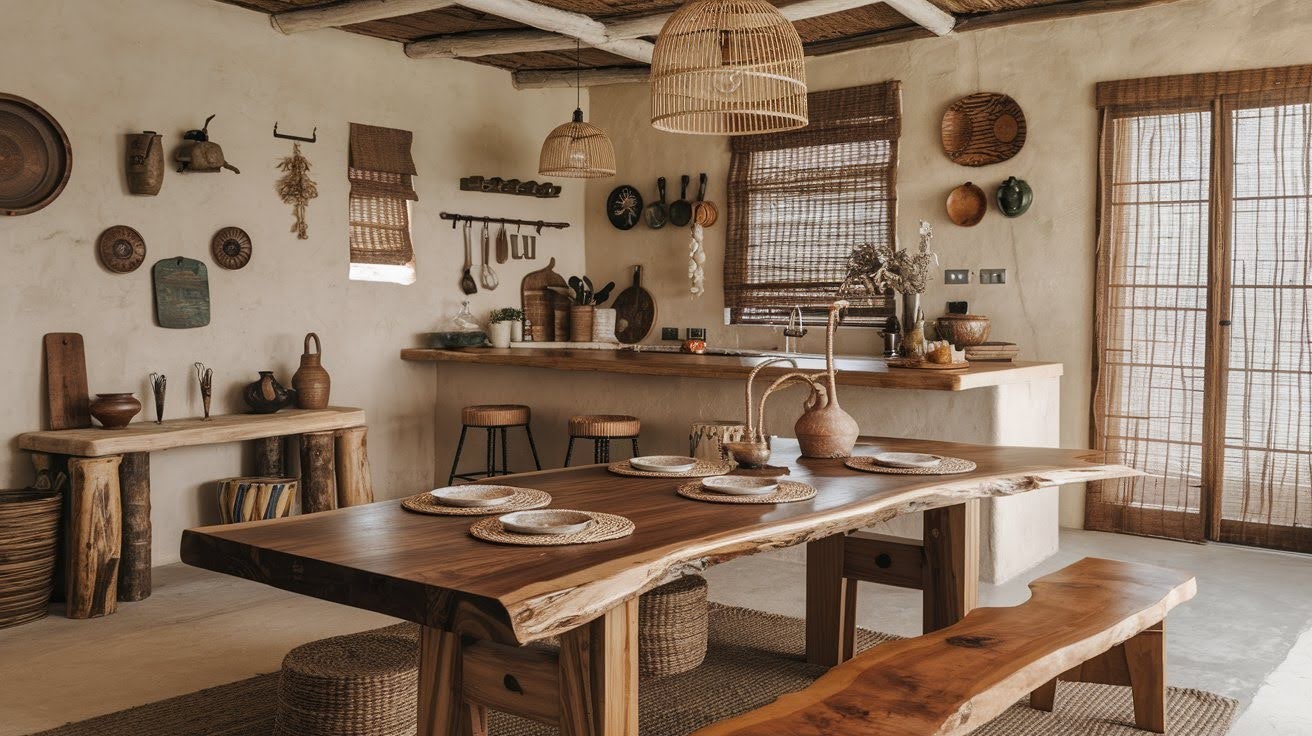Your kitchen feels cold. Your kitchen feels unwelcoming. I understand. I transformed sterile kitchens to warm inviting rooms. Families can’t wait to gather within those rooms. To incorporate earthy kitchen design elements into your home, here is the solution.
I’ll tell you about materials like wood and stone, which warm colors to use, and how to choose plants, lighting and eco-friendly options for the home.
I’ve worked with people like you and with real homeowners for years, and know what actually works. So here are some very practical steps you can take today to make a homey kitchen.
What Is an Earthy Kitchen?

An earthy kitchen connects you to nature through design using materials and colors from the natural world. Think wood cabinets, stone counters, and warm neutral tones that feel grounded and calm.
The concept centers on organic beauty with textures that invite touch and colors that soothe the eye. These spaces create cozy areas that welcome family and friends while offering timeless appeal that won’t look dated.
The natural connection reduces stress, the forgiving finishes need lower maintenance, and you get flexibility to mix old and new pieces. An earthy kitchen works for any home size, from small apartments to large farmhouses.
Key Elements of an Earthy Kitchen
Building an earthy kitchen starts with five core components that work together to create that natural, grounded feeling.
Colors Inspired by Nature

Start with colors you’d find on a forest walk. Browns anchor the space like tree trunks. Taupe and beige add softness.
Neutral foundation colors:
Warm browns for cabinets and furniture
Soft beige for walls and larger surfaces
Gray tones for balance and sophistication
Creamy whites for contrast without harshness
Add greens to bring life into the room. Olive green works beautifully on lower cabinets. Sage makes a gentle backsplash color. Forest green adds depth as an accent. Moss green brings freshness to textiles.
Blue tones cool things down without losing warmth. Slate blue pairs well with wood. Dusty blue adds vintage charm. Muted teal works as a statement color on an island.
Terracotta and rust tones warm everything up. Use them in tile work, pottery, or small accent walls. These shades reference clay and earth.
Natural Materials

Wood takes center stage in an earthy kitchen. Solid wood cabinets show beautiful grain patterns. A wooden island becomes a focal point. Open shelving in natural wood displays your dishes.
Consider reclaimed wood for character. Salvaged barn wood brings history into your space. Each piece tells a story through its marks and color variations.
Stone surfaces connect directly to the earth. Granite countertops offer durability and natural patterns. Marble adds elegance with veining. Slate works for flooring and backsplashes. Soapstone develops a rich patina over time.
Rattan and natural fibers soften the harder materials. Woven bar stools add texture. Rattan pendant lights create visual interest. Storage baskets keep things organized while looking natural.
Linen and cotton textiles complete the look. Use them for curtains, dish towels, and chair cushions.
Texture and Organic Details

Texture creates depth in your kitchen. Smooth stone counters contrast with rough wood beams. This variety keeps the eye moving.
Exposed brick adds rustic character. Leave it natural or apply a light wash. The irregular surface catches light beautifully throughout the day.
Raw wood elements show authentic grain and knots. Don’t sand everything perfectly smooth. Those imperfections add personality.
Layer different textures together:
Smooth painted cabinets with rough stone backsplash
Polished counters with matte ceramic dishes
Glossy tile with woven textiles
Sleek metal fixtures with chunky wood shelves
Mix hard and soft surfaces. Balance cold stone with warm fabrics. Combine shiny and matte finishes for visual interest.
Biophilic Elements

Plants belong in an earthy kitchen. They purify air and add living color. Place potted herbs on the windowsill for cooking. Hang trailing plants from open shelves.
Create a small indoor herb garden. Fresh basil, rosemary, and thyme stay within reach. You’ll use them more when they’re visible and accessible.
Large leafy plants make bold statements. A fiddle leaf fig in the corner draws the eye up. Snake plants thrive in various light conditions.
Bring outdoor views inside. Keep window treatments minimal. Let natural scenery become part of your design.
Fresh flowers on the counter change with the seasons. They cost little but add enormous life to the space.
Lighting

Natural light matters most. Large windows flood the space with sunshine. Skylights bring light from above. Keep window areas clear and unobstructed.
Choose warm artificial lighting for evenings. Cool white bulbs feel clinical. Warm white creates a cozy glow that mimics sunset.
Layer your lighting sources. Overhead fixtures provide general illumination. Under cabinet lights help with food prep. Pendant lights over the island add focus and style.
Consider dimmers on all switches. Adjust brightness for different times of day and activities. Morning coffee needs a different light than evening dinner parties.
Natural material light fixtures reinforce your theme. Woven rattan pendants cast interesting shadows. Wooden fixtures add warmth. Ceramic lamps bring an earthy texture.
Furniture and Decor Ideas

Live edge tables and handcrafted furniture showcase wood in its natural form with visible bark edges and tool marks. Local artisans create unique islands and stools with real personality.
Add woven elements like rattan pendant lights, jute placemats, and bamboo shades for softness. Natural fiber textiles bring comfort through linen napkins, cotton runners, and wool rugs.
Handmade pottery displays slight irregularities that add charm. Vintage pieces like old cutting boards, antique scales, and aged copper pots bring history. Open shelving displays these collected items arranged by color and height without looking cluttered.
Sustainable and Eco-Friendly Options
Bamboo makes a renewable choice for flooring and cabinets that resists moisture better than hardwoods. Cork flooring feels soft underfoot, reduces fatigue, resists mold, and absorbs sound.
Recycled glass surfaces turn waste into beautiful countertops and backsplashes in many colors. Other sustainable options include reclaimed wood, salvaged stone, low VOC paints, energy efficient appliances, and LED lighting.
These materials help the planet while working in both modern and traditional spaces.
Making Your Earthy Kitchen the Heart of the Home
The best kitchens draw people in naturally and keep them there through thoughtful design choices.
- Position bar stools at the island and add a corner table to encourage conversation while you cook and create intimate breakfast spots.
- Keep the layout open and flowing by removing unnecessary walls and creating cozy corners like window seats or reading chairs.
- Display family photos in wooden frames, hang children’s artwork, and show off meaningful collections to add personal warmth.
- Use open shelving and hooks to keep dishes, glasses, aprons, and towels accessible so everyone can pitch in naturally.
- Enhance atmosphere with fresh herbs, simmering cinnamon, fresh bread, morning light through large windows, and dimmed evening lights.
Conclusion
I still remember well the dramatic change I made when I introduced natural wood tones and soft greens to my cold kitchen. At last, my kitchen felt like home. From foliage and green to terracotta, there are many earthy kitchen ideas to take inspiration from.
Begin with simply adding a house plant or a lick of color then introduce textures and sustainable materials into kitchen design as the budget allows and achieve that intimate look.
I’d love to hear about it for how it goes! Tell how you make these natural warm colors live in your place. Drop a comment below.
Frequently Asked Questions
What colors work best in an earthy kitchen?
Browns, beiges, olive greens, sage, terracotta, and slate blue work best. Use warm neutrals as your base and add deeper greens and rust tones as accents.
How do I add earthy style on a budget?
Start with natural tone paint and add plants. Swap hardware for bronze or wood, use linen and cotton textiles, and shop secondhand for vintage pieces.
What flooring works in an earthy kitchen?
Wood flooring offers classic warmth. Stone or slate tiles provide durability. Bamboo and cork give sustainable options that fit the earthy look perfectly.
Can modern kitchens have an earthy design?
Yes. Pair sleek cabinets with natural wood accents and stone counters. Add plants and warm lighting to balance organic materials with clean modern lines.
How do I maintain natural wood in kitchens?
Seal wood properly and wipe spills quickly. Use cutting boards to prevent scratches and oil wood surfaces yearly to maintain color and protection.

